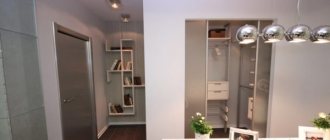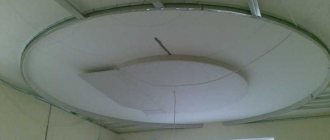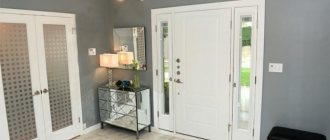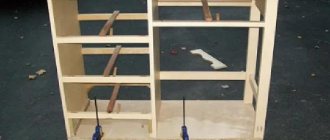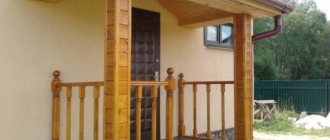The level of comfort and safety for everyone in the room largely depends on how effective it was to build ventilation in the kitchen of a private house. Properly configured ventilation simplifies the process of being at the stove or makes traditional evening kitchen gatherings after dinner more comfortable. Of all the systems for providing residential and non-residential space, planning and arranging ventilation in the kitchen in a private house remains one of the most intricate issues that require increased attention and accuracy during installation.
The most important requirements for ventilation in the kitchen
In a certain sense, the kitchen of a private home combines two contradictory factors: on the one hand, it looks like a production site and at the same time can remain a favorite place for evening relaxation. Therefore, when planning how to install ventilation in a private house in the kitchen, you have to look for a compromise, trying to combine and fulfill several requirements at once:
- The system for removing contaminated air and ventilation should not be too noisy, and should not disturb or create discomfort during operation for guests and owners of a private home;
- The kitchen ventilation device should be oriented towards flexible adjustment of performance parameters for the removal and supply of fresh air. The more finely you can adjust the kitchen ventilation, the better;
- It is preferable that the ventilation in a private house in the kitchen would be as compact as possible, would not “eat up” useful space and would not require constant human intervention in its operation.
The most important points of the requirements are comfort and work settings. Often, owners of private houses prefer to choose low-noise models of exhaust ventilation systems, even if they are more expensive or provide lower performance.
For your information! The ventilation system for a kitchen, like any other room equipped with thermal and electrical equipment, is quite difficult to calculate and design, guided only by the technical conditions and requirements of SNiP.
Kitchen ventilation in a private house always works in changing weather conditions, at different temperatures and air speeds outside the walls of the room. Experts advise that before making ventilation in the kitchen of a private house, perform an installation calculation with drawing up a diagram or preliminary design.
It is best to provide a small margin in the size of the pipes and the power of the ventilation drive; this will make it possible to change the height of the exhaust pipe, the angles of rotation of the air ducts, and the cross-section of the exhaust and supply ducts. As practice shows, a reserve when assembling ventilation in a private house, especially in the kitchen, is never superfluous.
Standards and requirements for kitchen exhaust systems
The air duct of the kitchen hood ventilation system has a square or round cross-section with a width or diameter of 130 mm. If the exhaust equipment is installed away from the ventilation shaft, the air duct in the room is mounted using a corrugated pipe, which can be steel, aluminum or plastic. The most common choice is aluminum.
Important! The corrugated pipe connects the hood to the ventilation shaft, so its diameter should not be less than the air duct on the unit itself.
Aluminum corrugation has an aesthetic appearance. It is cheaper than the steel version and much stronger than its plastic counterpart.
Recommendations for choosing a hood:
- Depending on the length of the ventilation duct, the required fan power is determined. An axial device mounted on hoods of a low price category is effective only when connected to a short ventilation duct through the wall. If the channel is long and has several turns, the power of such a fan will not be enough to remove polluted air outside.
- The type of exhaust unit - flow-through or recirculation - is selected depending on the distance from the stove to the ventilation duct (or its presence). However, even if the ventilation duct is far away or absent, a flow-through type can be installed.
- The required power of the unit is calculated taking into account the cross-section of the corrugated pipe connecting the hood to the ventilation.
- Pay attention to the noise that the device will produce. The noise level of the exhaust system should not exceed 58 dB. The noise level of such equipment, which does not disturb comfort, is 44-46 dB.
The color, design and shape of the equipment, as well as the type of control, are chosen according to personal preferences.
Remember! The efficiency of the hood depends not only on the engine power, but also on the diameter of the ventilation duct.
If you do not take into account the rules for choosing the power of the unit, the device will consume a lot of resources, producing low efficiency. The power of the exhaust device is measured in m³/h. Many are sure that the more power the hood has, the better, but this opinion is wrong.
The purpose of the unit is to remove unnecessary odors and impurities from the air, and not to ventilate the room. Since the capacity of a pipe with a diameter of 130×130 mm is 400 m³/h, a hood with a higher power will be useless.
On a note . When the fan operates at medium or low speed, the hood's performance increases.
The height of the hood above the stove depends on the type of hob. SNiP standards for hoods: above gas stoves - 750-850 mm, above electric stoves - 650-750 mm, above combined stoves (where there are gas and electric burners) - 700-800 mm. The inclined hood is mounted at a distance of 550-650 mm from the working surface of the gas stove, 350-450 mm from the countertop with an electric stove and 400-500 mm from the combined hob.
To install a kitchen hood through a wall, you will need a device with certain characteristics. A hood that is too powerful makes a lot of noise, leaving some of the combustion products inside the room
For your information. The noise level in accordance with SNiP should not exceed 55-60 dB.
When using any hood, the exhaust shaft must be anti-corrosion painted every three years.
What you need to know to plan ventilation
With this approach, ventilation in a private house for the kitchen turns out to be quite flexible in its characteristics. For example, by using a valve to change the flow area of the air ducts, the shape of the rotary elbow, or the inclination of the filter mesh, you can easily balance the operation of the kitchen ventilation system with the operation of the air ducts of the bathroom or bathroom.
There are several methods for calculating proper ventilation in a kitchen in a private house, but all of them provide only reference or recommended parameters for pipe sections. In practice, when assembling and starting up the system, one has to deal with the appearance of noise, hum, surges in resistance to air flow in pipes and reverse air flow. Problems have to be eliminated due to the reserves built into the ventilation design and the laying of routes in the kitchen.
A little about natural ventilation
The natural ventilation system of a cottage has certain differences from the hood in an apartment building. Here it is necessary to take care of good oxygen circulation in each room. Therefore, one pipe and one ventilation hole will not be enough for a private house. This is a whole system that consists of many pipes, passages and outlets.
However, when designing and building a private house, many mistakes are often made. As a result, it turns out that there seems to be air ventilation, but in reality it does not work.
Natural ventilation of a private house
The main mistakes made when designing and installing cottage ventilation:
- Incorrectly positioned ventilation holes. According to the rules, they are placed no lower than 10 cm from the ceiling surface. In practice, they are located much lower, which leads to stagnation of warm waste masses near the ceiling.
- Insufficient height of the ventilation pipe leads to a stop in the movement of air inside the channel.
- Joint ventilation of adjacent rooms.
- The kitchen of a private house is often equipped only with forced ventilation, although according to the rules, there must also be a natural ventilation hole in the kitchen area.
Attention! Natural ventilation is a simple and inexpensive way to provide yourself and your family with fresh oxygen, however, it must be followed according to all the rules.
A significant disadvantage of natural ventilation is that it is often insufficient in the kitchen. This is especially noticeable when there is no wind or during hot periods. Therefore, it is necessary to use additional specially installed devices that help increase the flow of fresh air, purify and remove exhaust air.
Air removal system parameters
To determine the most important dimensions of pipes and air intakes, you will need to perform a small calculation in the following order:
- We determine the amount of air flowing through the kitchen ventilation per unit of time;
- Knowing the cubic capacity of the kitchen air space and the recommended air speed values, we calculate the cross-sectional area and the recommended diameter of the air duct.
This is enough to build simple ventilation in the kitchen. As a rule, a kitchen ventilation system is assembled from two independent subsystems - natural and supply and exhaust. Both schemes are calculated based on the maximum air exchange rate in the isolated kitchen space. For a private home, according to SanPiN 2.1.2.2645-10, the air in the kitchen atmosphere should change from 3.5 to 5 times per hour, depending on the type of stoves and ovens used.
If the kitchen is planned in the form of one large studio or pavilion, or a semi-open veranda, the gas exchange rate can be reduced to 2.5-3 times.
Necessary preliminary calculations
The initial parameter for the calculation is the volume of air removed and supplied to the room. There is more than one method, but the most used ones take sanitary standards and room area as a basis.
According to the requirement of the former, it is necessary to start from the fact that the air requirement is in m3/h. for one person spending most of the time in the house, it depends on the purpose of the room:
- living room - 40;
- bedroom - 20;
- kitchen - 60;
- bathroom - 25.
Based on the second criterion, we proceed from the following regulatory requirement: per 1 m² of living space there must be 3 m3 of replaced air. When calculating the cross-section of air ducts, they are guided by the fact that the optimal air speed in the central channel is 5 m/sec, and in the side channel - a maximum of 3 m/sec.
You can independently determine the pipe diameter using the formula:
S = L/3600/v,
where L is the productivity measured in m3/h, v is the air speed in m/sec.
Data on air consumption depending on the cross-section of the air duct are summarized in the table.
The aerodynamic resistance of an air duct with a circular cross-section is less than with a square one. The square shape is more compact, fits organically into the interior of the room, and has a large range of sizes
Air ducts are made of metal, plastic, aluminum foil, polyester. The last two are flexible systems. Their noise and heat insulation characteristics are good and they are ideally suited for a private home.
Easy way to calculate
In theory, the dimensions of the supply ventilation window in a kitchen in a private house for calculations are taken to be 70% smaller than the cross-section of the exhaust pipe. In practical work, adjustable gate valves are installed for air flow, with the ability to change the flow area from 70% of the calculated value to 150%. In this way, you can effectively and accurately regulate ventilation performance and the level of gas exchange in the kitchen, without using noisy electric exhaust systems.
In a situation where the room is divided into several sectors or levels, the ventilation system in a private house in the kitchen is calculated based on building regulations No. 60.13330.2012, 62.13330.2012, 7.13130.2011. But there is one problem. The longer the air duct pipes, the more difficult it is to take into account the influence of turns, elbows, splitters, valves, filters on the resistance of the air ducts and the loss of flow energy.
Therefore, the design of a kitchen ventilation system for two- to three-story private houses is traditionally calculated in several stages. Initially, calculations are performed using air flows under ideal conditions, without taking into account friction. In the second pass, the air speed values are checked, taking into account losses in elbows and turns, joints and branching of pipes. Speed reduction coefficients have long been calculated and tested experimentally; their values can be taken from reference tables in SNiPs.
The work is not difficult, but requires accuracy. If you don’t want to bother with calculations, you can use pipes that are obviously larger than 10-15% of the cross-section accepted for a standard kitchen. A small reserve of throughput will allow you to reduce the flow speed to 0.8-1.0 m/s, which will make the operation of the ventilation system less noisy, but more cumbersome.
You cannot arbitrarily choose the cross-section of pipes used in the kitchen ventilation layout; there are limitations here. In pipes of small diameter, usually 90-110 mm, at a speed of more than 2 m/s, the air flow begins to hum at joints and turns, especially in windy or frosty weather. For the kitchen, this limitation is especially relevant, since hot air is removed from the room. As it moves through metal air ducts, the flow quickly cools and loses its energy of movement before it rises to the roof and is thrown out through the vent pipe.
Making air ducts with a large cross-section, especially if one central exhaust pipe is used, is also dangerous. The slow and at the same time massive air flow after turning off the hood can easily tip over and return to the ventilation system of a private house. Even if there is a check valve in the kitchen, kitchen fumes and odors easily flow through the air ducts into the bedroom and living room.
Forced ventilation
Forced air circulation occurs using a supply and exhaust system
Despite modernization, natural circulation of air masses cannot work as efficiently as forced circulation. This option requires more maintenance, but costs less. Special grilles with valves are placed at the outlets of the ventilation duct, which manually regulate the outflow and inflow of air. Regulation also occurs when the outside temperature changes. The disadvantage is the destabilization of the entire ventilation system, in which air can enter from a duct in another room. The system is also difficult to dismantle.
Forced ventilation is installed only in those houses where a sufficient amount of air mass can be supplied. These could be basements, basements and other rooms where there is a high risk of dampness. Fans can be added to the circuit to improve performance.
Options for building ventilation in the kitchen of your home
Before you begin calculating the air ducts, you need to sketch out a sketch of the passage of the pipes, which will help you choose the layout and ventilation device in a private house in the kitchen. For private housing construction, several classic options for constructing kitchen ventilation are mainly used:
- Scheme with a separate exhaust pipe installed on the kitchen hood;
- Sequential air removal system. The kitchen air ducts are connected in series with the pipes of the toilet and bathroom into one cluster;
- Closed or parallel circuit. All rooms in a private house are connected in parallel to each other and connected to one powerful ventilation unit.
The last option for constructing a ventilation system is the most difficult to calculate and expensive to install in practice. The parallel circuit is considered one of the most economical and low-noise solutions, since all fans and control equipment are assembled into one unit, located inside the attic of the house.
Selecting an exhaust device
The hood should be selected so that it matches the volume of the room and the loads from the stove. Therefore, the main criteria for choosing a device are technical characteristics, which include:
- Productivity measured in cubic meters per hour (m³/h). To do this, the volume of the kitchen is calculated by multiplying its area by the height of the ceilings. And then the result obtained is multiplied by a factor of 12, which determines the standard air exchange per hour. For a gas stove, a coefficient of 15 to 20 is taken.
- Device dimensions. They should not be smaller than the dimensional parameters of the hob.
- Noise level. The manufacturer indicates this indicator in the product passport. And each consumer chooses it according to his own feelings. For example, 50 dB is conversational speech, so the lower the level of such noise emitted, the better.
- Various operating modes. There are two positions here: a flow-through system for the emission of polluted air, and a recirculation system. The first is a direct connection of the device to the street or ventilation duct through an air duct, the second is air filtration and the subsequent return of the purified air mass back to the kitchen area.
- Control. The panel through which modes and lighting are configured can be push-button, electronic or touch-sensitive. In this regard, everyone chooses at their own discretion. But the more modern the model, the more expensive it is.
- Design. Manufacturers today offer a huge range of products, distinguished by a variety of colors, shapes and sizes. Exhaust devices come in two forms: flat and dome. The latter are a cone-shaped shape that tapers towards the ceiling. Thus, the efficiency of the passage of polluted air through the internal channels of the device increases.
Read also: How to install a built-in hood
All exhaust devices are divided into groups according to installation method:
- Wall-mounted. They are attached to the plane of the walls with self-tapping screws and dowels.
- Hanging. They are attached to the bottom plane of the kitchen wall cabinet suspended above the hob.
- Built-in. They are installed in the same cabinet, which does not have a bottom plane. At the same time, the control panel of the hood is also visible.
- Corner designs. They are mounted in the corner of the room, provided that the hob is installed there.
- Island. Suspended from the ceiling above the kitchen island if it has a built-in hob.
Attention! If a recirculating type hood is purchased for your home, then its power characteristics are selected to be 30% greater than the performance of the flow type. This is due to the fact that the recirculation unit does not so much extract air as process it, passing it through filter systems. And this takes part of the fan power.
Parallel duct system
The main idea behind the development of a rather cumbersome system comes down to the ability to make ventilation extremely quiet and at the same time be able to use heat due to superheated air rising above the stove in the kitchen. The receiving section of the kitchen hood is located at a height of 65-70 cm above the plane of the hob, the temperature of the exhaust air reaches 80-130°C. In an hour, the kitchen produces 120-150 cubic meters of hot air, the energy of which can be used to heat the entire room of a private house.
For ventilation of kitchens with gas stoves, a closed cycle is not used; the air, after cooling and cleaning, is not returned to the room, but is discharged through a common vent pipe on the roof.
Kitchens with centralized ventilation do not require ventilation with natural air removal, so the kitchen room of a private house can be located anywhere, from the basement to the attic. Often such a room does not even have window openings or ventilation transoms.
The only drawback of a parallel ventilation scheme is the need for fairly large and bulky ducts of increased cross-section. Each kitchen room has at least two air ducts - for supplying clean air and extracting contaminated air. If there are no suspended ceilings, then the kitchen interior may not look very aesthetically pleasing.
The system is quite effective, but it is very difficult to independently calculate and plan a kitchen ventilation project in a private house using the above diagram. It is best to buy ready-made documentation with designed air ducts, control valves and ventilation equipment. In this case, even an amateur mechanic can equip the kitchen and living quarters of a private house with a ventilation system. But it is better to entrust the connection and configuration to specialists.
Twin kitchen ventilation scheme
In a typical layout of rooms in a typical private house, the bathroom, bathroom and kitchen are practically grouped in one place. This choice is determined by two factors, the layout of the water supply and sewerage systems and the layout of the ventilation air ducts of the house. It is most convenient to remove dirty air from the bathroom and kitchen through one channel.
Most often, the ventilation duct comes from the bathroom, crosses the bathroom, connects to the kitchen and is led outside the house, most often to the roof or through the wall of the house. Due to the significant length of the channels and pressure drops, the ventilation systems of each room have to be equipped with a forced fan intake of air from the room.
To avoid the flow of polluted air between rooms, built-in fans are equipped with check valves. If in a private house the pipe for discharging exhaust air flows is led to the roof, then the fans for the supply and exhaust system must be equipped with transfer valves. This is a simple device in the form of a valve box with a swing valve. For bathrooms and toilets, it can be built into the fan housing or installed behind it.
For the kitchen the situation is somewhat different. Firstly, in a kitchen with a gas cabinet or stove, the presence of natural ventilation from a separate exhaust pipe has always been and remains one of the main requirements of gas workers and fire inspectors.
Secondly, the pressure of the air flow in the ventilation duct coming into the kitchen from the bathroom and toilet is slightly higher than in the kitchen area. Therefore, the transfer valve operates very unstable under kitchen ventilation conditions. As a result, normal ventilation of the room can be ensured only when the hood is turned on. After a night of stagnation, the atmosphere of the kitchen will seem quite stuffy and musty.
The situation can be improved if you make ventilation in the kitchen in a private house with a separate exhaust pipe. If, according to the construction conditions of a private house, it is not possible to break through a pipe to the roof, experts advise venting the kitchen ventilation in a private house through the wall.
Natural ventilation for a private home
What is generally needed for a person to live comfortably in a house is warm in winter and cool in summer. And most importantly, fresh air is needed at any time of the year, without drafts. Therefore, its movement should be natural and not stagnate, and unpleasant odors should evaporate from the room without lingering. It would seem that artificial ventilation will solve all the problems. But it also has disadvantages, one of which is intense air exchange. It can result in heat loss. The replacement of air in rooms with forced ventilation is more than 3 times higher than the amount of natural air exchange. Therefore, it is advisable to equip housing with natural air exhaust systems.
As always, every rule has its exceptions. A small movement of air flow in the ventilation duct implies significant dimensions of the air duct. If we are talking about a natural exhaust system, then the passage of 300 cubic meters of air in one hour will require an air duct cross-section of 25×40 cm (Ø35 cm); with forced exhaust, a cross-section of 16×20 cm (Ø2о cm) is sufficient. Due to the fact that building a ventilation duct inside a load-bearing wall is sometimes difficult, and installing a structure under the ceiling or along the wall of a room looks ugly and does not fit into the concept of the room, a forced ventilation system becomes the solution.
Criteria for choosing a ventilation system in private housing construction.
To decide which ventilation system is best suited for a particular building, we are guided by the following factors:
- cleanliness of the surrounding airspace;
- building materials used in the construction of cottage walls.
Another important point is the financial side of the issue. But in order to ensure long-term comfortable living, they try to ignore this factor.
In this case, the requirements for installing natural ventilation are truly clean air around the home and the walls of the cottage made of breathable materials: ceramics, wood, adobe, foam and aerated concrete.
The conditions for installing forced ventilation systems include the need to filter the ambient air in order to remove unpleasant odors and harmful impurities and ensure air exchange in buildings with walls made of sealed panels and polystyrene foam concrete.
Natural air exchange: infiltration and ventilation
The entry of air into a room, as well as its removal, can be natural or artificial. In the first case, air enters as a result of infiltration and during ventilation of the room. Infiltration is understood as the minimum penetration of air through loose junctions of window sashes, gaps between the window block and the opening, leaks in door leaves, and through walls. Wooden windows of standard design have high air permeability of 15 kg/hour*m3. This is quite enough to ensure air flow into a small house (120 m2). Plus, air flow is added to it through the leaks of the entrance doors and through the walls.
The installation of plastic windows is airtight; it does not provide for any leaks. The air permeability of plastic window blocks is virtually zero. As their owners say, the window does not breathe. Therefore, when choosing a block, you need to purchase a window that already has a supply window valve.
If time is lost and the window unit is already installed, it is recommended to install a wall valve for air intake. Usually this is a pipe mounted into the wall and closed on both sides with ventilation grilles. The grille placed in the interior of the house is adjustable. It can open and close entirely. It is advisable to install a supply wall valve in the area of the window opening closer to the radiator so that the penetrating air masses fall into its action zone.
You can also get a natural flow of air by ventilation. It is performed by opening the window slightly or opening the frame of a plastic window. But this method of ventilation is ineffective. It is associated with a large loss of heat, promotes the formation of condensation, and completely replacing the volume of air in the room takes a long time. About an hour.
Another method is short-term ventilation using fully open windows. This is the more common method. With such ventilation, air renewal occurs in 7-8 minutes, while the window structure does not have time to cool down and condensation does not form.
However, the most effective ventilation is a draft. Windows and doors are opened wide, and due to the formation of draft, the replacement of air masses in the room is carried out almost instantly, after 3 minutes. This type of ventilation is not advisable while people are in the room; it can contribute to the occurrence of colds.
Rooms in the house that need ventilation ducts
Let us consider in detail the issue of arranging natural ventilation in a private household. First, let’s determine where ventilation ducts must be installed.
These are sanitary and hygienic premises: a toilet, a bathtub, a shower room, a utility room with washing equipment.
Next, the kitchen.
In wardrobes, utility rooms and storage rooms, if they are associated with residential apartments.
If the exit is organized into non-residential premises, then the issue of air ventilation is solved by installing a supply valve in a wall or window structure.
The room where the heating boiler and other heating equipment is installed, according to the standards, must be equipped with both a ventilation duct and a wall check valve. And also, as required by sanitary rules and regulations, it is necessary to equip the room with a ventilation duct if it is separated from the ventilated room by more than two doors.
In the remaining apartments of a private household, where there are no ventilation ducts, a supply window or wall valve is installed, and a flow hole is made mainly on the door leaf to the adjacent room.
In addition, it is important to provide natural ventilation of the underground on the ground floor and the basement space, for which ventilation ducts are also installed.
Performance of a standard ventilation duct
The performance of the ventilation duct is influenced by the following factors: material of manufacture, height of the air duct and temperature conditions at the installation site.
Table 1.
We provide a table for a standard ventilation duct made of concrete blocks, with a cross-section of 12×17 cm or 204 cm2.
How to correctly position natural ventilation ducts in private housing construction
If we take as a basis the minimum cross-sectional area of the ventilation duct equal to 0.016 m2, then its side will correspond to 12.5 cm and Ø 150 mm. Using such a channel, it is possible to replace air in the room up to 30 m3 per hour. To increase the intensity of air removal, it is necessary to use a ventilation duct of large dimensions and length. Air ducts with a length of less than 2 m do not meet the requirements for ventilation of premises, since they do not provide proper air exchange.
In practice, the length of the ventilation duct on a floor depends on the number and height of the upper floors, the attic and the roof pipe. To ensure uniform draft in all air ducts on the floor, they are made of approximately the same length. The cross-section of the ventilation ducts is also left the same, not for reasons of ease of installation. Ventilation performance in rooms is regulated by selecting the dimensions of the ventilation grille.
In private buildings, the number of air ducts is small, so they are not combined into a common duct, but are taken out of the room through the attic to the roof and equipped with a head. The combination of ventilation ducts leads to deterioration of ventilation in general.
Ventilation units are placed inside load-bearing walls or by attaching air ducts to them. It is advisable to build a block of brick, then the size of the ventilation duct is chosen as a multiple of its dimensions. For example, 140x140 mm (half brick per half brick) or 140x270 mm (half brick per brick). Perhaps the installation of a ventilation duct with special concrete blocks. To install ventilation ducts made of bricks or blocks, it must be possible to support them on a foundation base or reinforced concrete floor.
Air ducts are made from polymers or metal. In this case, they are closed with a special box. Such ventilation ducts have found application in wooden buildings and frame houses.
How to calculate natural ventilation of private housing construction
To determine the size of ventilation ducts, it is advisable to calculate the lowest performance of the ventilation system, taking as a basis the amount of volume of exhaust air.
When finding the amount of air volume escaping through natural exhaust air ducts, it is based on the fact that air enters the building through reverse ventilation valves from the outside, reaches rooms equipped with ventilation ducts, and through them returns again to the street.
We present an algorithm for calculating the required number of ventilation ducts for each floor of the building:
- Based on the standards, we find the total minimum amount of air volume entering from the outside through check valves - QП, m3/hour.
- According to the standards, we establish the total amount of air emanating from rooms with ventilation ducts - Qb, m3/hour.
- Having compared the indicators of the lowest inflow QP, m3/hour and outflow Qв, m3/hour of air flows, we select the largest one and take it as the lowest productivity of all ventilation ducts on the floor, obtained as a result of the calculation - Qр, m3/hour.
- Based on the height of the house, we determine the size of the vertical ventilation duct on the floor. Since the height of the attic, according to SN and P, is equal to the height of the living space, and the minimum size of the ventilation duct above the ridge of the roof of the house is 0.5 meters, the height of the ventilation duct is equal to the sum of these indicators. An example of such a calculation is given below.
- Taking into account the level of the ventilation duct and the overall estimated productivity of all ducts on the floor, according to the calculation, see below, we determine the number of required air ducts from the selected material.
- Guided by the selected number of standard air ducts, we divide them between rooms, taking into account the need to ensure air exchange standards in all rooms with ventilation ducts.
Sample calculation of natural ventilation for private housing construction
As an example, we take a one-story building with a total area of 130 m2 and a wall height of 2.8 meters. The cottage has six living spaces - 100 m2, a kitchen, a bathroom and toilet, a storage room - 4.5 m2. The floors in the house are made of tongue-and-groove boards on joists on the ground. The underground space, 300 mm high, is ventilated through a ventilation duct. We build air ducts from concrete blocks.
- For a private building, according to building codes and regulations, air aeration in living rooms is accepted once.
It follows from this that the supply of air from outside for residential premises:
- Qp = 100 x 2.8 x 1 = 280m3/hour;
Where
- 100 - total living area;
- 2.8 - height of premises;
- 1 - air exchange rate in a private house.
- Regulatory documents define: aeration in the kitchen as 60 m3/hour, in places of high humidity as 25 m3/hour; the rate of air exchange in the pantry and underground is 0.2 1/hour.
Next, we calculate the required amount of exhaust air from each room:
- Qв 1 = 60+25 + 25 = 110 m3/hour – the amount of exhaust air from the kitchen, bathroom, toilet;
- Qв 2 = 4.5 * 2.8 * 0.2 = 2.52 m3/hour - the amount of exhaust air from the pantry;
- Qв 3 = 130 * 0.3 */ 0.2 = 7.8 m3/hour - the amount of exhaust air from the underground.
- Total: Qv total = Qv 1 + Qv 2 + Qv 3 = 110 + 2.52 + 7.8 = 120.32 m3/hour. - the total amount of air leaving the house. A comparative analysis shows that Qп > Qв total, from which it follows that the overall estimated lowest productivity of all ventilation ducts on the floor is:
Qр = Qп = 280 m3/hour.
- For a one-story building, taking into account the level of the attic space, which, according to building codes and regulations, is equal to the height of the living space, and the minimum height of the ventilation duct above the roof ridge is 0.5 meters, we assume the length of the ventilation duct is 4 meters;
- According to Table 1, at a temperature of 20 °C and a ventilation duct height of 4 meters, we select the productivity of one typical ventilation duct with an area of 204 cm2 - 45.96 m3/hour.
We calculate the number of typical ventilation ducts made of concrete blocks: 280 m3/hour / 45.96 m3/hour = 6.09. For a given one-story building, 6 exhaust air ducts are required.
- In house construction, mandatory ventilation ducts are provided in the kitchen, bathroom, toilet and pantry, as well as in the underground. Based on structural needs, we equip the underground with two ventilation ducts. In total we get 6 natural exhaust air ducts.
- Now we are calculating the provision of standard indicators for premises. Kitchen. For the kitchen, it is necessary to provide an air exchange of 60 m3/hour, however, it turns out that one ventilation duct is not enough, so we decide to use a unit with two ventilation ducts.
The remaining premises meet the standards. Therefore, we finally accept 7 ventilation ducts for our one-story house
We carry out a comparative analysis:
- kitchen 45.96 *2 = 92m3/hour> 60m3/hour.
- bathroom 45.96m3/hour > 25m3/hour.
- bathroom 45.96m3/hour > 25m3/hour.
- storeroom 45.96m3/hour > 2.52m3/hour.
- underground 45.96 *2 = 92m3/hour> 7.8m3/hour.
Overall performance of all channels
- 92 + 45.96 + 45.96 + 45.96 + 92 =321.8 m3/hour
- 321.8 m3/hour > 280 321.8 m3/hour.
It should be noted that this calculation method is simplified, but has the right to life.
Ventilation duct placement above the roof
In windy weather conditions, a zone of rarefaction or increased pressure is created around any obstacle, depending on the course and strength of the air currents. The ventilation duct is no exception. When the head of the ventilation duct enters the vacuum zone, the draft increases, and when an area of increased pressure forms around it, it usually decreases and tends to zero. In this case, the draft may overturn, as a result of which the air begins to move from outside to inside the house. In order to minimize the influence of air mass flows on the operation of the ventilation system, it is necessary to install the head of the ventilation duct according to certain dimensions.
Insulation of ventilation ducts
When the ambient temperature decreases, condensation begins to form in the ventilation duct and draft decreases. To avoid this problem, air ducts are placed inside load-bearing external walls or insulated with heat-insulating materials.
How to resist the aerodynamic resistance of ventilation ducts
To minimize the amount of aerodynamic drag that interferes with the traction force in the air duct, it is necessary:
- increase the cross-sectional area of the ventilation duct;
- the cross-section of ventilation ducts should not change along the entire length;
- The ventilation duct must be installed in a strictly vertical position. It is possible that the air duct may deviate to the side up to 1 m, but not exceeding 30° from the vertical plane. Horizontal sections in natural ventilation systems are not allowed;
- The walls of the ventilation duct must be completely smooth.
Features of wall ventilation
To correctly route the ventilation duct through the wall, two requirements must be taken into account:
- The outlet part of the pipe, located outside the room, should be located at a distance of more than 60 cm from the window opening. The height of the outlet point is chosen as high as possible, but not more than 30 cm from the ceiling slab of a private house;
- The length of the horizontal section of the pipe from the ventilation outlet to the hood or air intake diffuser should be no more than 90 cm for fanless systems, and up to 2.5 m for ventilation systems equipped with forced induction.
The window for fresh air can be located at the same level as the ventilation outlet on the wall, but always on the opposite side of the kitchen room. If both openings are planned on the same wall, then the difference in installation levels should be at least 150 cm.
In addition, it is allowed to install forced exhaust systems with coaxial air ducts. Instead of two holes for separate ventilation ducts, one passage is drilled in the wall of a private house for the installation of a double pipe. An electric fan blows air out of the kitchen hood through the inner pipe. Fresh air is supplied to the room through the annular gap between the outer and inner pipes.
For normal operation of the kitchen ventilation system, two conditions must be met. Firstly, a hole in the wall is drilled 2-3 mm larger than the outer diameter of the coaxial duct. Maintaining an air gap allows you to avoid deformation of the air duct due to possible thermal expansion of the wall and pipe material.
Secondly, when drilling a passage channel in the wall, it is necessary to maintain a negative slope of 3-5o, which ensures condensate drains outside the room.
The ventilation outlet from the kitchen is traditionally covered with a grille or injection nozzle, which covers the cut from snow sticking and increases the draft of the air duct in low winds.
Natural ventilation
Natural air circulation in the house
A private house can be equipped with a natural circulation system. With the development of building materials, the full creation of such a scheme becomes difficult. The use of double-glazed windows and insulation of walls prevent the flow of fresh air from outside, which can cause excess humidity and dampness to form in the room. The scheme could be implemented when old wooden windows were installed. It is also suitable for wooden buildings.
The natural ventilation system works on the principle of vertical channels. They are installed in the house at one end, and the other is brought to the roof. Warm air rises to the top, is pushed out through the channel, and in return a new fresh cold stream enters. This scheme has many nuances that a person cannot control: outside temperature, humidity, wind.
Effective operation will be achieved at certain temperatures. Otherwise, the hood will work worse. Such exhaust systems are installed in bathrooms, toilets and kitchens, as well as other rooms where large air outflow is required. Particular attention is paid to rooms located below ground level (basement, cellar). Radon gas is formed in them, which must be removed. To do this, a powerful ventilation duct is made to remove air to the street.
Natural ventilation has many disadvantages. It is impossible to regulate the air flow; ventilating the house by opening windows can make the occupants sick. Air masses can also enter through the chimney. For this reason, it is better to install controlled hoods or improve natural ventilation by installing additional elements.
Methods for upgrading the circuit
The existing system for an apartment can be improved with your own hands. To do this, you need to purchase a special valve, which is mounted at the entrance to the channel. The device is automatic and is able to respond to changes in external factors. When the values increase, the relay is activated, the valve opens and more air enters the house. A sensor that records changes is placed outside the house and determines the temperature and humidity of the environment.
Air duct for kitchen hood
One of the stages of installing a hood is the selection and installation of air ducts. Air at room temperature is removed from the kitchen, so there are no special requirements for air ducts and any can be used. Three types are usually used:
- Aluminum corrugated sleeve. It is good because it is easy to give it the desired shape - it can easily bend at any angle. Simply take a piece of the desired length and give it the desired shape. Disadvantage: the operation of the hood will be noisy, since the air flow causes noise and resonance. The second negative point is that the surface is ribbed, which creates additional difficulties for air flow. Well, one more drawback is that it is difficult to care for: soot and dust get stuck in the grooves, and it is difficult to clean.
- Plastic (PVC) round air duct. Easy to use round polymer pipes. The air duct of the required configuration is assembled from shaped elements - curves, bends, adapters, couplings. They are connected to the pipe due to the presence of extensions on the shaped elements. To prevent the elements from becoming separated during operation, the joints can be coated with glue (liquid nails or Moment). Another option is to fasten with self-tapping screws - three or four for each connection. The advantage of PVC air ducts for exhaust is that they are “quiet”, the smooth inner walls do not interfere with air movement, and the outer walls are easy to clean. The disadvantage is that the assembly process is more complex (compared to aluminum corrugation).
Types of air ducts for kitchen hoods
- Plastic square air duct. Also made from polyvinyl chloride (PVC), but has a rectangular cross-section. All other characteristics are the same. Rectangular air ducts are used if it is necessary to save space - they are well hidden behind plasterboard partitions, behind stretch or suspended ceilings.
There is also a difference between plastic and corrugated air duct - price. Polymer ones are more expensive. Despite this, if you have the opportunity to install a hood using PVC, install them. With an equal cross-section, they provide more efficient air removal and are also less noisy.
The cross-section of the pipes for the air duct is determined by the size of the outlet opening on the hood. In the case of rectangular pipes, an adapter is used.
Air duct sizes for hoods
Round ducts are available in three sizes: 100 mm, 125 mm and 150 mm. This is the diameter of plastic pipes and corrugated hoses. There are more sections of flat air ducts and they are presented in the table.
Dimensions of flat PVC air ducts for hoods
How to choose the size? In the case of round pipes, their diameter must match the diameter of the hood outlet. It is very undesirable to install an adapter at the outlet and then use an air duct of a smaller diameter - this will reduce the speed of air purification. And even if the hood is very powerful, it will not cope with air purification.
When choosing the cross-section of a rectangular air duct, its cross-sectional area should not be less than the cross-sectional area of the outlet pipe. And the connection occurs through a suitable adapter.
How to attach corrugation to the hood and ventilation
If you decide to install a hood and use aluminum corrugation for the air duct, you will need to think about how to attach it to the body and to the ventilation. To do this, you will need clamps of the appropriate size. They can be metal or plastic.
To connect the hood to the ventilation system, you will also need a special ventilation grille. It has a hole in the upper part for connecting the air duct pipe. There are holes in the lower part to remove air from the kitchen using natural circulation when the hood is not working.
Attaching the corrugation to the grid on the wall
A grate with a protrusion is suitable for attaching the corrugation - around the hole there is a side of several centimeters, onto which the corrugation is placed, after which it is secured using a clamp of a suitable size.
The corrugated air duct is attached to the hood using the same principle. It has a protrusion on which the corrugation is put. The connection is tightened using a clamp.
How to attach an air duct to walls
For plastic air ducts there are special fastenings in the form of latches. They are first mounted on the wall using dowels. The installation step depends on the curvature of the route, but on average, 1 fastening per 50-60 cm is sufficient. Pipes are inserted into these latches during installation with little effort.
If the air duct needs to be fixed to the ceiling, you can use the same fasteners. But if you need to maintain a certain distance from the ceiling, this type of installation will not work. In such cases, take perforated plasterboard hangers, attach them to the ceiling, and then use small PVC screws to attach an exhaust duct to them.
Methods for attaching corrugations
Corrugated air ducts are attached to the walls using clamps or large plastic ties. If necessary, they are also mounted to the ceiling using perforated aluminum hangers.
How to make ventilation in the kitchen
First, plan the location of your furniture, namely the place where the tiles will stand. According to design features. three main types of installation products here These are corner, island, wall hoods.
The first option is suitable for corner kitchens, where the hob itself is in the corner, which saves space in the long run. The island variety looks the best, but is only suitable for large areas. As a rule, such a hood is placed in the center and takes up approximately 60 cm of space above the stove. The latter option is somewhat similar to a wall-mounted hood, in which one part is adjacent to the wall, and the other is located directly above the stove.
Kitchen ventilation diagram
As you can see, the kitchen ventilation scheme is not that complicated. It consists of a hood, a pipe, a check valve and the head of the ventilation gap, which, according to SNIP standards must extend more than 0.5 meters above the bottom of the roof. As a rule, this is not done for aesthetic reasons, since all the work of extracting air falls on the shoulders of a powerful fan. That is, a modern hood has a forced operating principle.
Ventilation outlets for the kitchen
Every kitchen has a gas or electric stove. The second option is considered safer for health, since there is no open flame combustion. As for using a gas stove , a large volume of carbon dioxide is formed during the cooking process.
kitchen ventilation outlets are not used as intended, excess carbon dioxide can lead to headaches, suffocation and other accumulated problems. Therefore, the most correct solution would be to install a hood or establish forced ventilation of the room.
In addition to the accumulation of CO2, gas particles that have not been completely burned can accumulate in the air, which is often observed due to improper operation of the stove. In addition, if the stove is not modern and does not have protection against flame extinction, you can get into a situation where liquid escapes from the pan and floods the fire, which will lead to the spread of gas throughout the house. Therefore, kitchen hoods with ventilation outlets must be installed in accordance with safety requirements.

